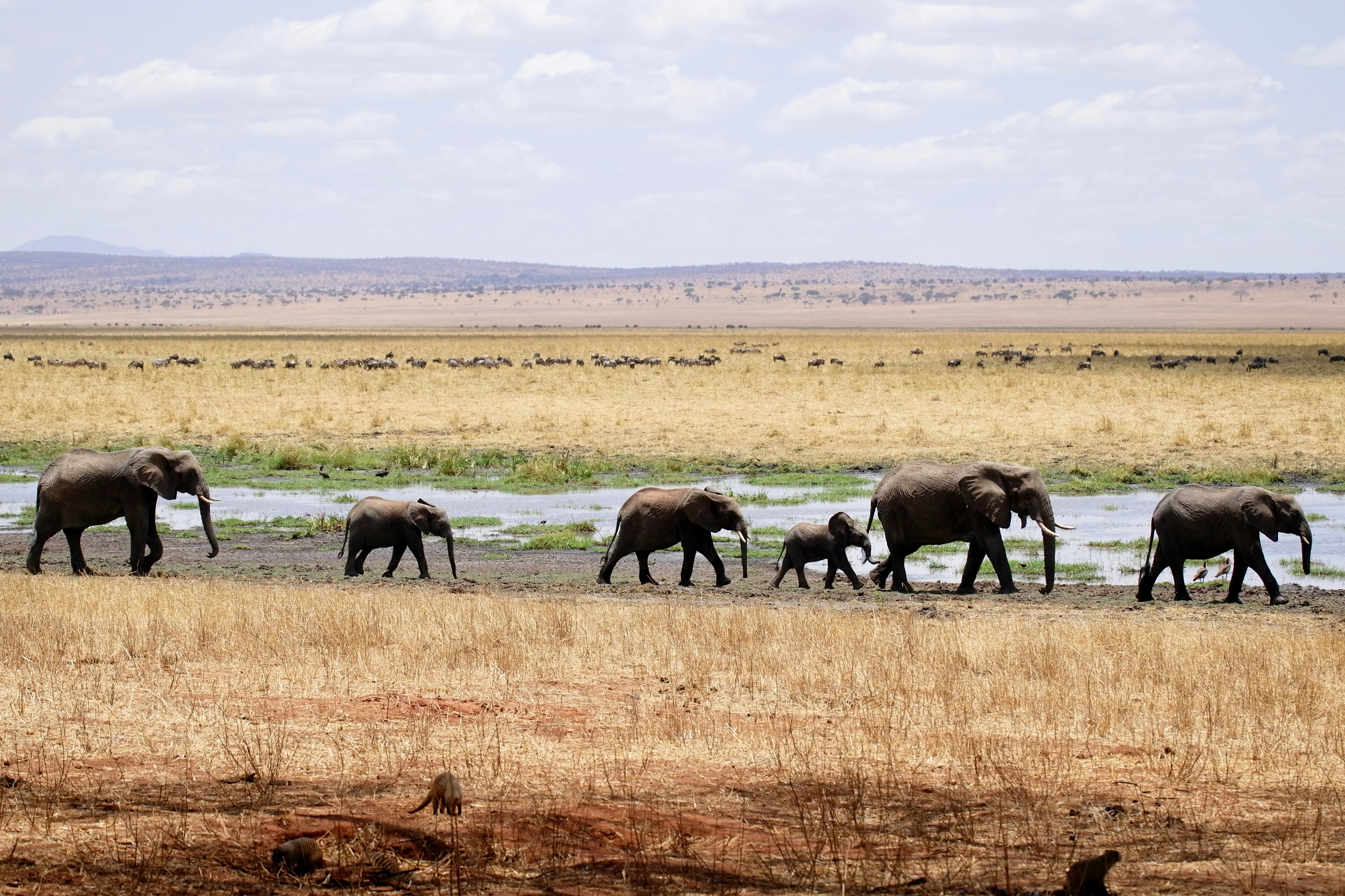

2,850 km² (1,100 mi²)
1970 (National Park)
June to Early November
Located just 120km (75 miles) from Arusha, Tarangire National Park is known for its striking baobab trees, seasonal swamps, and the life-sustaining Tarangire River. During the dry season, massive elephant herds, buffalo, zebras, and wildebeests gather to quench their thirst here— a spectacle that draws in big cats as well. Although often overshadowed by the Serengeti and Ngorongoro Crater, Tarangire offers an equally classic safari experience with fewer crowds and breathtaking scenery.
Whether you’re on a short visit or a longer safari, Tarangire’s diverse landscapes present open grasslands, thick acacia stands, plus palm-filled swamps in the south. Iconic baobabs tower over the plains, acting as water reservoirs for elephants and providing fruit for birds and baboons. Its varied habitats sustain a broad range of wildlife year-round. If you have time, consider spending two nights here to head deeper into the southern Silale Swamp region— often the domain of large tuskers and tree-climbing lions.
Famous for its high density of elephants, Tarangire hosts up to 2,000 or more during the dry season, with some herds migrating from far-off reserves in search of water. Buffalo, giraffes, impalas, warthogs, wildebeests, and zebras graze around the river valley, always mindful of lions, leopards, and cheetahs staking out vantage points for a hunt. Lucky visitors may even catch a glimpse of the African Wild Dog passing through.
Bird enthusiasts can rejoice—Tarangire is home to a remarkable ~550 bird species, including ground hornbills, lovebirds, lilac-breasted rollers, and ostriches. A walk around the swamps reveals storks, herons, and other waterbirds that thrive in the park’s more marshy zones.
Few sights rival a Tarangire sunrise over the baobab-studded plains. These legendary “upside-down trees” can store water in their trunks, aiding elephants that carve into the bark for moisture when rivers recede. North to south, the Tarangire River runs amid varied vegetation— from acacia woodlands to palmyra palm groves and large swathes of Silale Swamp in the park’s southern zone, impassable in rainy months but crucial as a refuge for wildlife in the dry.
At the famous “Poachers Hide,” an ancient, hollow baobab once served as a secret base for illegal hunters. Visitors can step inside the trunk and marvel at how poachers once evaded rangers.
Though Tarangire can be explored all year, the dry season (June–October) is prime for wildlife concentration near the Tarangire River. Clear skies and minimal vegetation also improve game viewing. From November to May, rains produce lush scenery—ideal for birdwatchers as migratory species arrive, but big game sightings can be more spread out. Many travelers integrate a Tarangire visit into a Northern Circuit itinerary, possibly en route to Lake Manyara or Ngorongoro.
June to Early November
Animals gather at the river, easy sightings
Mid-November to May
Birding paradise, lush growth, fewer vehicles
A short drive from Arusha, Tarangire’s scenic blend of baobab forests, wetland zones, and rolling savannah offers a diverse safari. Whether it’s watching massive elephant herds dig for water, spotting a lion perched on an Acacia branch, or enjoying a peaceful walking safari, Tarangire stands out for both new and repeat safari-goers. Many travelers remark on the park’s more intimate vibe, especially when heading deeper south, away from day-trip crowds.
Game drives in 4×4 vehicles remain Tarangire’s main draw, but some accommodations arrange walking safaris in private concessions— a rare treat on the northern circuit. Additionally, certain upscale mobile explorer camps offer guests a luxurious under-the-stars camping experience. Keep your camera ready for tree-climbing lions or elephants quenching their thirst in holes they’ve dug into a drying riverbed. Even a single overnight stay can be magical, yet two nights let you explore southern swamps like Silale in-depth.
Tarangire National Park sits about 120 km from Arusha, often serving as the first stop on a longer northern safari circuit. The main entry, Tarangire Gate, is easily reached via a paved road from the town of Makuyuni. Other gates—Sangaiwe and Boundary Hill—provide alternate access. Accommodations range from small tented camps by the Tarangire River to larger lodges near the park boundary. For an extended safari, continue westward toward Lake Manyara, the Ngorongoro Crater, or the Serengeti.
Discover remarkable elephant herds, scenic baobab groves, and peaceful swamps on a Tarangire safari. Let Safari King Africa customize your visit—whether it’s a brief overnight en route to the Serengeti, or a longer immersion exploring the park’s southern gems. Contact us now and let the wonders of Tarangire be your introduction to Tanzania’s northern circuit.